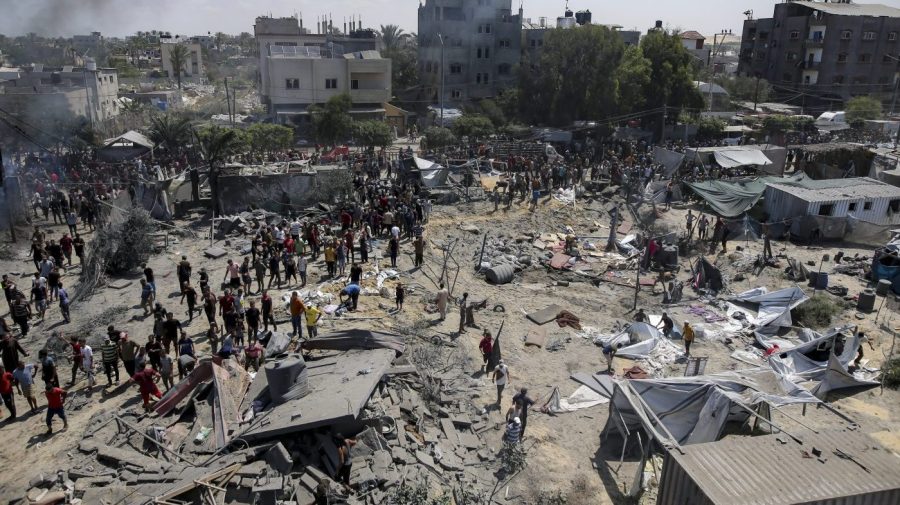On Friday, the Israeli military announced the targeted killing of a senior Hamas official, Izz al-Din Kassab, whom they identified as one of the remaining high-ranking members of the militant group. The Israeli airstrike took place in Khan Younis, a town in southern Gaza, and was described by the military as a significant blow to Hamas’s operational capabilities. According to the Israeli statement, Kassab served as the head of national relations in Hamas’s political bureau, tasked with managing connections between Hamas and various terrorist factions in Gaza. The Israeli military also claimed that he possessed the authority to orchestrate attacks against Israel, suggesting that his role was pivotal within the group.
Hamas confirmed the death of Kassab through its own channels, stating that he was killed alongside another official during the airstrike targeting their vehicle. However, the militant group downplayed Israel’s characterization of Kassab’s rank, clarifying that he was merely a local official rather than a significant figure within their higher decision-making circles. This discrepancy in the official status of Kassab reflects the challenges of accurately gauging the pecking order and influence within such opaque organizations during ongoing conflicts.
The context of Kassab’s death comes amid continued Israeli military operations in Gaza. The relentless airstrikes have reportedly resulted in substantial casualties, with medics in the region indicating that around 64 individuals were killed and dozens more injured in the violence that spanned overnight into Friday morning. This ongoing military activity has created a grim humanitarian crisis in Gaza, exacerbating existing conditions and leading to critical shortages of essentials such as food, water, and medical supplies.
The current state of affairs in northern Gaza has drawn sharp criticism from international humanitarian agencies. Officials from the United Nations have referred to the circumstances there as “apocalyptic,” raising alarms over the imminent risk of disease, famine, and violence impacting the entire Palestinian population. These dire assessments underscore the urgent need for humanitarian interventions and a reevaluation of tactics employed by the belligerents to safeguard civilian lives amidst the hostilities.
In an effort to mediate the escalating conflict, two high-ranking officials from the Biden administration, Amos Hochstein and Brett McGurk, traveled to Israel. Their mission was to facilitate discussions for a potential cease-fire not only in Gaza but also in relation to Israel’s ongoing tensions with Lebanon. Unfortunately, upon returning to the United States, the officials conveyed a sense of stagnation in negotiations, highlighting the complexities and entrenched positions of the involved parties that hinder progress towards peace.
As the situation continues to evolve, the interplay among military actions, political maneuvering, and the humanitarian crisis remains a focal point for both regional stability and international diplomatic efforts. The ramifications of Kassab’s death and the ongoing Israeli operations will likely continue to reverberate, impacting both the immediate conflict dynamics and the broader geopolitical landscape in the region. The urgent call for humanitarian action and ceasefire reflects a broader recognition of the need for addressing the underlying issues that fuel the cycle of violence and instability in Gaza and beyond.

